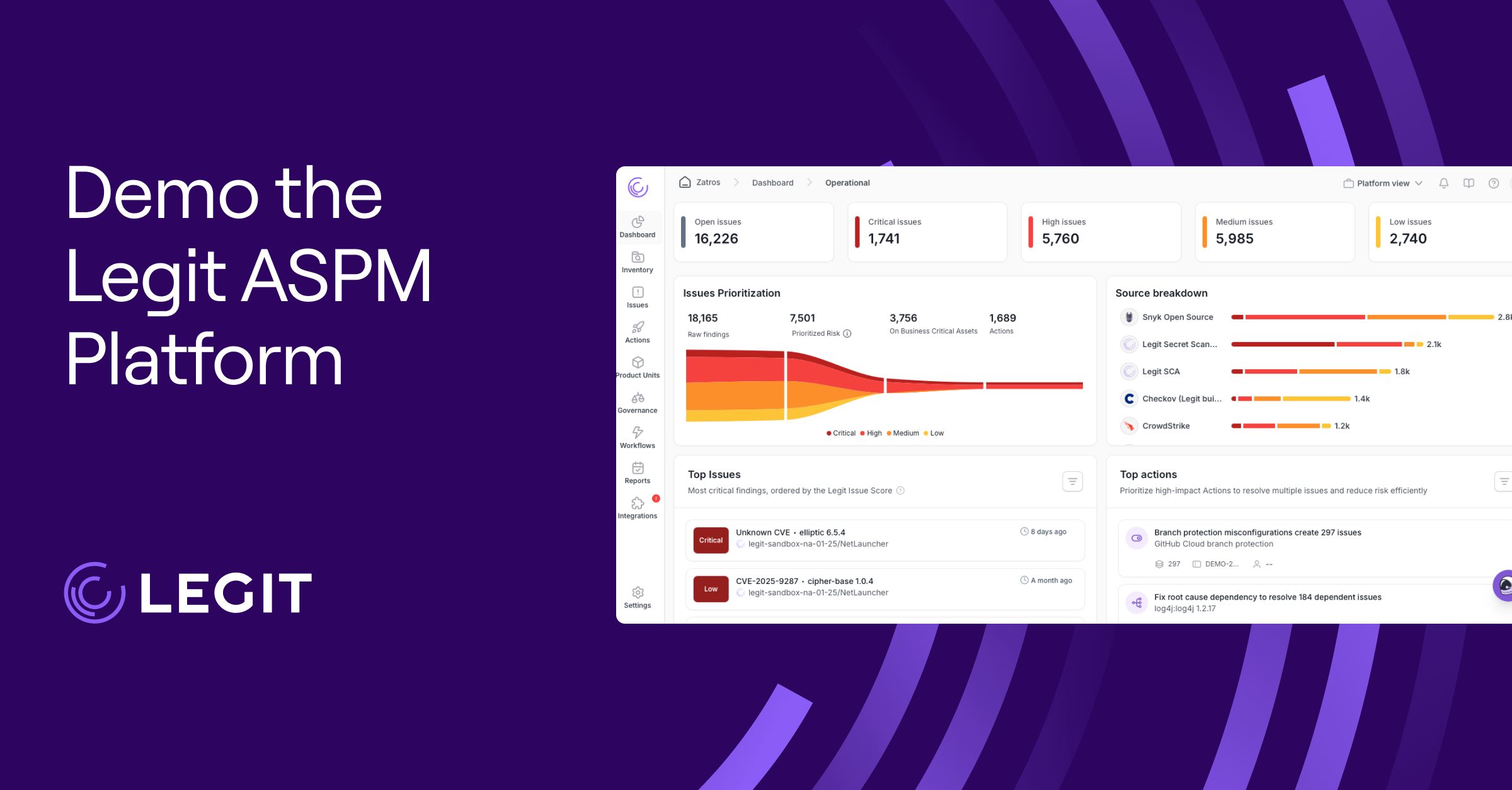Cyberthreats are evolving fast, and staying ahead requires more than basic defenses. Threat detection and response (TDR) equips you to identify risks early and take action before they escalate. It’s a strategy for protecting your systems, preserving customer trust, and keeping your organization resilient against ever-changing threats.
Whether leveraging cybersecurity detection and response systems or adopting advanced solutions, here’s how to use TDR to your advantage.
What Is Threat Detection and Response?
TDR strategies and tools uncover cyberthreats by analyzing user behavior, network activity, and other patterns that might signal malicious intent. This allows you to take swift action, containing breaches and safeguarding critical systems without losing time or data.
Every organization’s needs are unique, whether you’re adopting zero-trust principles or deploying advanced monitoring tools. A TDR approach should align with your security goals to safeguard applications and sensitive data in a way that works for your organization.
How Does Threat Detection and Response Work?
TDR tools continuously monitor your environment—networks, applications, endpoints, and user behavior—to uncover threats in real time. They use a combination of threat intelligence and automation to identify potential risks like suspicious access attempts or unusual traffic patterns. After detecting a threat, a tool might generate alerts, isolate affected systems, or deploy automated countermeasures, depending on the situation.
Some organizations enhance their TDR capabilities with security operations centers (SOCs), where dedicated teams oversee detection and response efforts 24/7. Whether managed internally or outsourced, these teams hunt for risks proactively and respond quickly to minimize damage. However, automated tools reduce the need for SOCs—and save money in the process.
Cybersecurity Threat Detection and Response Benefits
TDR doesn’t just identify risks. It transforms how your organization handles security. By combining proactive detection with rapid response, TDR delivers various benefits that enhance your cybersecurity posture:
Early Threat Detection
Stopping threats before they cause harm is a cornerstone of effective security. With TDR, you can identify unusual activity early, allowing your team to intervene before attackers can breach systems or steal sensitive data.
Reduced Dwell Time
The longer a cyberattacker remains undetected, the more damage they can do. By detecting and responding to intrusions faster, TDR expedites the removal of bad actors from your environment and minimizes the effects of their actions.
Enhanced Visibility
TDR tools provide a comprehensive view of your organization’s security environment. With robust network threat detection monitoring across endpoints and applications, you can uncover vulnerabilities where you might not have spotted them otherwise.
Improved Compliance
As regulations tighten worldwide, TDR helps you stay ahead of compliance standards. It simplifies the reporting process and shows auditors and stakeholders your dedication to strong cybersecurity.
Cost Savings
Cyberattacks can come with hefty price tags, from ransom payments to lost productivity. TDR reduces these costs by stopping attacks early and keeping operations running smoothly. Preventing a breach is always more affordable than recovering from one.
Proactive Security Posture
TDR goes beyond reaction, giving you the tools to identify emerging threats and reinforce your defenses. Using these tools to understand how attackers operate lets you intentionally strengthen your environment and minimize future risks.
Threat Detection Methods
Detecting threats isn’t a one-size-fits-all process. It relies on multiple methods working together to cover every angle of your environment. These approaches give you the flexibility to identify and respond to risks in real time.
Threat Hunting
Threat hunting is the process of proactively searching for risks that might not trigger traditional alerts. Using data from your systems, a security team investigates unusual activity, looking for signs of compromise that automated tools might miss.
Setting Attacker Traps
Sometimes, the best defense is baiting attackers into revealing themselves. Honeypots and decoy systems mimic valuable targets, luring cybercriminals and exposing their tactics before they strike your infrastructure.
Anomaly-Based Detection
This method focuses on identifying patterns that are outside of normal activity. By analyzing baselines of what’s typical, anomaly detection can highlight unusual behavior—like a sudden spike in network traffic—that may indicate a threat.
Behavioral-Based Detection
Behavioral-based detection focuses on how users, systems, or applications interact with your environment rather than solely on known patterns or anomalies. If it spots behavior that deviates from normal usage, like an employee account attempting to access restricted data, it flags it as suspicious. This approach is especially useful for identifying insider threats or sophisticated attacks.
Signature-Based Detection
Signature-based detection relies on a library of known attack patterns or malware signatures. When it spots a match in your environment, it immediately flags it as a potential threat. While effective for known risks, it works best when combined with other methods to catch novel attacks.
7 Best Practices for Threat Detection and Response
TDR is most effective paired with strong practices that improve detection, response, and overall security. Here are some tips:
1. Conduct Regular Training
Your security tools are only as effective as the people using them. Regular training keeps team members sharp and aware of the latest threats, from phishing to advanced malware tactics. Hands-on exercises like simulated attacks and tabletop scenarios prepare employees to recognize and respond to threats quickly and effectively.
2. Leverage Threat Intelligence
Integrating threat intelligence feeds like CrowdSec or OpenPhish into your TDR efforts gives you real-time insights into current risks, like zero-day vulnerabilities. Platforms like Mitre ATT&CK also provide valuable resources for understanding adversary behaviors and improving defenses.
3. Implement Continuous Monitoring
Threats don’t operate according to a set schedule, and nor should your security. Continuous monitoring lets you consistently look out for unusual activity, detecting and mitigating risks before they escalate.
4. Develop an Incident Response Plan
By outlining specific containment, eradication, and recovery steps in a detailed incident response plan, your team can respond quickly and minimize downtime during an attack. For a structured approach, consider aligning your strategy with frameworks like the NIST Cybersecurity Framework, which outlines five core elements to strengthen your organization’s defenses.
5. Foster Collaboration Across Teams
Threat detection isn’t just an IT issue. It requires input from various departments. Collaboration among security, operations, and development teams creates a comprehensive and efficient approach to addressing threats.
6. Automate Where Possible
Automation enhances speed and consistency, especially during high-pressure situations. Automated security tools streamline repetitive tasks, like isolating infected endpoints or generating reports, freeing your team to focus on more complex challenges.
7. Continuously Improve Your Approach
Every incident is an opportunity to learn. Conducting post-incident reviews helps you identify gaps in your TDR strategy and make adjustments to prevent similar threats in the future. This iterative process strengthens your security posture over time.
Enhance TDR With Legit Security
Complement your TDR efforts with robust application security enabled by Legit. The Legit ASPM Platform acts as the foundation of your application security program, ensuring all your testing, including static analysis, is more effective and efficient. Legit discovers and visualizes all aspects of both applications and the software factory producing these assets, plus all security controls and gaps. Further, it consolidates security findings across all your scanners and tools (i.e., SCA, SAST, DAST, etc.), leveraging AI-driven correlation and risk scoring to fix your most critical issues, first.
Automate and simplify security across your development environment and stay proactive against evolving threats. Book a demo today.
Cyber Threat Detection FAQ
What Is Included in Legit Security’s Threat Intelligence Capabilities?
Legit Security’s threat intelligence goes beyond flagging vulnerable code. It provides a full, real-time view of your software factory, mapping relationships between assets, owners, security controls, and risks across the SDLC.
With Legit Context, the platform automatically analyzes applications and pipelines from code to cloud. It assigns business impact ratings based on real-world exposure, such as if an app is internet-facing, processes sensitive data, exposes APIs, or uses AI components. Backing each ranking is linked evidence, allowing security teams to see exactly why something is high risk.
Legit also tracks and enriches threat data with detailed inventory intelligence. It identifies services like Stripe or OpenAI, critical data models, API endpoints, and the frameworks in use. Teams can customize the app catalog with specific fields, assign roles like “Security Champion,” and map issues to their risk strategy.
Combined with external threat intelligence feeds, this context helps teams cut through the noise and prioritize what truly matters. It’s not just about “find the vuln”—it’s understanding the risk, knowing who owns it, and seeing how it fits into your broader security posture.
How Does Legit Security Detect Security Threats?
Legit Security detects threats by continuously analyzing your software delivery environment, from code to cloud, for signals of risk. The platform monitors everything from source code, build systems, and IaC to secrets, dependencies, and pipelines, allowing it to uncover misconfigurations and policy violations in real time.
Rather than relying only on signatures or static rules, Legit uses behavioral analysis and context-aware scanning to catch threats that traditional AppSec tools often miss. This includes unauthorized changes to pipeline configurations, privilege escalation in CI/CD workflows, and compromised credentials.
The platform also correlates external threat intelligence feeds with internal asset data, helping teams understand which emerging threats matter most and which ones they can safely deprioritize.
Because Legit learns from past incidents and security posture trends, its detection capabilities sharpen over time. The more data it analyzes, the more precisely it can pinpoint risks.
When the platform detects a threat, it can trigger alerts, open tickets, and launch remediation workflows. This reduces response times and helps teams stay on track without unnecessary disruption.
Download our new whitepaper.


